Introduction to Considering Medical Intuitive Training
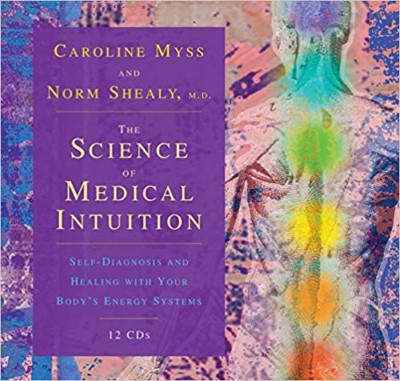 Medical intuition is an emerging field that integrates intuitive abilities with medical knowledge, aiming to identify the emotional, mental, and spiritual factors influencing an individual’s physical health.
Medical intuition is an emerging field that integrates intuitive abilities with medical knowledge, aiming to identify the emotional, mental, and spiritual factors influencing an individual’s physical health.
Respected individuals in this discipline emphasize the importance of a well-rounded education in the field, combining the development of intuitive faculties and a firm grounding in healthcare’s ethical, psychological, and physiological aspects.
When considering a medical intuition training course, it is crucial to evaluate several key elements that can significantly impact the quality and effectiveness of the education provided. Drawing on insights from esteemed instructors’ perspectives, the following are the top seven components that prospective students should scrutinize to ensure that they receive comprehensive and ethically sound training:
1. Accreditation and Reputation: Investigate whether relevant professional bodies recognize the training program and have a reputation for providing a high standard of education. The credibility of the institution offering the course can strongly indicate the curriculum’s quality and the certification’s prestige.
2. Curriculum Content: The course should offer a balanced mix of theoretical knowledge and practical skills, touching upon anatomy and physiology, alongside instruction on intuitively reading and interpreting energy fields and health-related information.
3. Ethical Framework: Given the significant implications of medical intuitive work on individuals’ well-being, a robust ethical framework should be at the core of the training. This involves understanding boundaries and confidentiality and applying intuitive insights in health contexts.
 4. Faculty Experience and Expertise: The instructors should be experienced practitioners with proven expertise in intuition and medical topics. Their guidance is essential in modeling how to integrate intuitive abilities with medical advisement effectively and ethically.
4. Faculty Experience and Expertise: The instructors should be experienced practitioners with proven expertise in intuition and medical topics. Their guidance is essential in modeling how to integrate intuitive abilities with medical advisement effectively and ethically.
Integration with Conventional Medicine: A course should teach students how to harmoniously collaborate with the medical community, reinforcing that medical intuition is a complementary approach rather than a substitute for traditional medical care.
Support and Supervision: Mentoring and supervision during training ensure that students can develop their skills confidently and address any ethical or practical challenges that arise, with guidance from seasoned professionals.
Post-Certification Resources: Ongoing support, such as advanced training, networking opportunities, and professional development resources, can be instrumental in helping graduates continue evolving in their practice and stay updated with the latest advancements in the field.
In choosing a medical intuition training course, these criteria serve as a foundation to evaluate the potential effectiveness and ethical rigor of the educational experience.
They reflect the values espoused by thought leaders in the field, like Caroline Myss, who advocates for an approach to medical intuition that is insightful and undertaken with the utmost integrity and respect for the individuals served.
AFFILIATE DISCLAIMER:
This Mind Body Spirit Network site contains affiliate links to products, online events, and tools for personal & professional transformation from Sounds True. The Shift Network, MindValley, Evolving Wisdom, Positive Psychology, mindbodygreen, and other reputable and consciously aligned personal development, spiritual growth, and transformational companies. We set ourselves apart by vetting teachings and resources calibrated to be of higher consciousness, meaning upward-lifting, positively oriented, and constructive. We may receive a commission for purchases made through these links.
Empowering the Intuitive Healer: The Influence of Caroline Myss in Medical Intuitive Training
Caroline Myss is widely recognized as pioneering in medical intuition and medical intuitive training.
With a unique blend of expertise in energy medicine, intuitive healing, and mysticism, she has played a pivotal role in popularizing the concept of medical intuition and its applications. Caroline Myss’s groundbreaking work has empowered countless individuals to embrace their intuitive gifts and apply them to holistic health and healing.
As a best-selling author, international speaker, and renowned medical intuitive, Caroline Myss has shared her insights and teachings with audiences worldwide. Her books, including “Anatomy of the Spirit” and “Medical Intuition: Your Awakening to Wholeness,” have become go-to resources for those interested in understanding the mind-body-spirit connection and the transformative power of intuitive healing. Through her workshops and training programs, Caroline Myss has mentored aspiring medical intuitives, guiding them to develop and enhance their intuitive abilities for healing purposes.
Caroline Myss’s impact extends beyond individual development, as she has also inspired many healthcare professionals to embrace a more holistic and intuitive approach in their practices. Her teachings emphasize the significance of addressing physical symptoms and the emotional and spiritual aspects of health. By pioneering the integration of medical intuition with traditional medicine, Caroline Myss has bridged the gap between conventional healing modalities and the realm of intuitive insights.
In the world of medical intuition, Caroline Myss’s legacy continues to serve as a guiding light for those seeking a deeper understanding of the human condition and the power of intuitive healing. Through her visionary work, she has instilled a sense of empowerment and purpose in countless individuals, fostering a community of healers dedicated to transforming lives through the art of medical intuition.
7 Top Key Elements to Consider in Your Medical Intuition Trainng
#1—Expanded Perception Techniques:
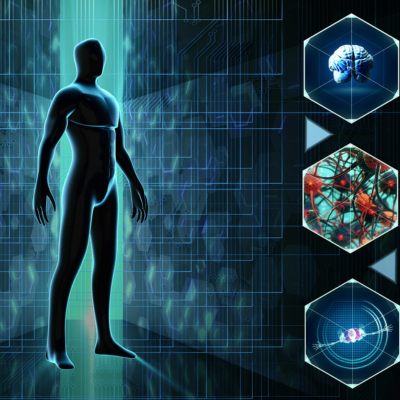 The course should teach systems of expanded perception through intuition, enabling students to gain insights beyond traditional medical understanding[1].
The course should teach systems of expanded perception through intuition, enabling students to gain insights beyond traditional medical understanding[1].
Critical Thinking and Judgement: Training must foster critical thinking to discern the subtle information received intuitively, ensuring it is evaluated alongside tangible clinical data. This includes developing the ability to question and analyze perceived intuition against established medical knowledge and differentiate between genuine intuitive insight and cognitive biases or assumptions.
Integration of Intuition with Clinical Practice: A practical medical intuition course should provide a framework for responsibly integrating these intuitive insights into a clinical setting. It should address the protocols for communicating intuitive data to clients or other healthcare professionals, maintaining a clear distinction between intuition and evidence-based medical advice.
#2—Visualization Skills in Medical Intuition Training
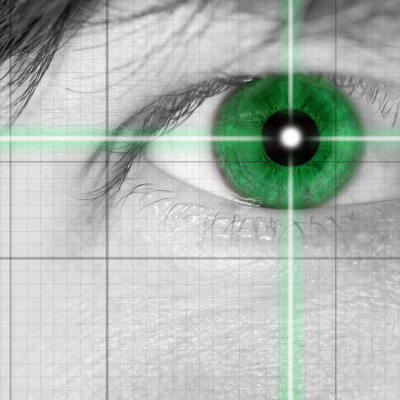 It is essential for the course to focus on developing strong visualization skills, as this is a fundamental aspect of medical intuition, according to Myss’s approach[1:1].
It is essential for the course to focus on developing strong visualization skills, as this is a fundamental aspect of medical intuition, according to Myss’s approach[1:1].
Developing visualization skills is a central component of medical intuition training courses. These skills enhance the practitioner’s ability to ‘see’ or ‘sense’ clients’ energy field or subtle anatomy.
Visualization in this context is not just about creating mental images. Still, it is a practice that may encompass various sensory modalities to ‘perceive’ information that is not accessible through the five traditional senses.
The process of honing visualization skills often includes exercises that progressively refine the individual’s capacity to form clear, detailed, and controlled mental or 3rd eye images or sensations.
This can be likened to training any other skill, where practice and consistency lead to improvement.
These exercises may involve guided imagery, meditation, or other mindfulness practices that encourage heightened awareness and focus.
Clairvoyance, within the framework of medical intuition, is one type of expanded perception that visualization exercises might aim to cultivate.
Often translated as “clear seeing,” clairvoyance refers to the ability to gain information about an object, person, location, or physical event through means other than the known human senses.
In the context of medical intuition, it is thought to allow a practitioner to ‘view’ the energetic state of a client, identify imbalances or disturbances, and perceive areas that may correspond with physical or emotional issues.
Courses may, therefore, incorporate specific training on developing and refining clairvoyant abilities, providing students with strategies to access, strengthen, and use this skill in a controlled and ethical manner. This could include learning how to open and close this faculty at will, protecting oneself from being overwhelmed by sensory information, and ensuring that the practice is conducted with the client’s consent and for their benefit.
Visualization skills, and by extension, clairvoyance, are postulated to support medical intuition in creating a holistic picture of a client’s health. The information gleaned through these intuitive methods is typically used to complement conventional medical diagnoses and treatments, and it is emphasized that these insights should be communicated to clients with clarity, tact, and care, honoring the ethical implications of such practices.
However, it’s important to note that the validity and reliability of clairvoyance and related intuitive practices are not universally accepted or scientifically proven. Therefore, it’s critical for training programs to present these concepts with transparency about the current state of empirical support and to foster an understanding of the limitations and the importance of integrating intuitive findings with established medical knowledge and practice.
Up Your Healer Practice: Become a Medical Intuitive
DO YOU WANT TO …
- Be able to track the root of any health challenge?
- To support your clients better with supplementary information gained from their body?
- Work at home while still safely serving your clients and earning a living with specialized tools?
- Honor the fact that the body can show us what is out of balance if we simply know how to pay attention?
- Learn real-time intuition skills that you can apply right away to help your clients?
- Work closely with colleagues, providing missing pieces of the health puzzle?
- Still help clients but save wear and tear on your body?
- Hone your intuition skills to an expert level with clear ethical boundaries.
… then you are in the right place.
… this is all you will need to do Medical Intuition well!
#3—Intuitive Scanning Methods
Training should include innovative scanning techniques that allow practitioners to obtain information from the physical body and its energy systems[1:2]. Medical intuition training courses endeavor to bridge intuitive skills with healthcare practice. Thus, they require a multifaceted approach that covers a variety of competencies and ethical considerations. It’s crucial to elaborate on the components and pedagogical methods employed in such training programs to delve deeper into this subject.
Intuitive scanning methods may vary from one training program to another. Still, they aim to empower students to sense and interpret the health and well-being of a person’s body, including its energetic state. Based on the principles often elaborated on by leaders in the field, such as Caroline Myss, the following bullet points outline potential scanning methods that might be taught in medical intuition training courses:
Energetic Body Scanning: A technique where students learn to sense and ‘read’ the energy field or aura surrounding and permeating the body, looking for imbalances or disruptions that could correlate with physical or emotional issues.
Chakra Assessment: Focusing on the seven major chakra centers, which are believed to be vortexes of energy related to different aspects of physical and emotional well-being, to identify which chakras may be overactive, underactive, or blocked.
Organ Scanning: Techniques aimed at intuitively examining the health and vitality of specific organs or body systems, often using a combination of touch and non-touch methods to ‘feel’ for issues or to visualize them internally.
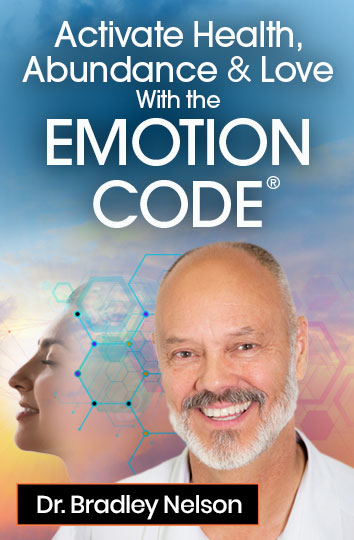 Emotional Energy Reading: Training involves identifying emotional energy patterns that may be held within the body, based on the belief that emotions can have a significant impact on physical health.
Emotional Energy Reading: Training involves identifying emotional energy patterns that may be held within the body, based on the belief that emotions can have a significant impact on physical health.
Intuitive Dialogue: Developing skills in engaging in a silent, intuitive ‘conversation’ with the subject’s body or higher self to ask questions and receive information about health conditions, often prioritizing the areas that need attention.
Symbolic Sight: The ability to perceive and interpret symbols or images that appear during a scan, which may provide insights into a person’s health or emotional state.
Remote Viewing: In some courses, there may be instructions on performing intuitive scans on individuals who are not physically present, also known as distant healing or remote healing.
Integration with Diagnostic Techniques: Guidance incorporating and blending intuitive findings with conventional diagnostic methods, enhancing the overall understanding of the patient’s health without relying solely on intuitive information.
These scanning methods and techniques must be taught within an ethical context, acknowledging the limitations of such practices. They are meant to complement, not replace, conventional medical diagnosis and treatment. Students should be cautioned against making definitive health claims based solely on intuitive readings and should always encourage individuals to seek out or continue with modern medical care.
#4—Explore the Historic Context of Medical Intuition
Understanding the history of medical intuition, which dates back to figures like Phineas Parkhurst Quimby and Edgar Cayce, can provide depth and context to the practice[2].
As a concept, medical intuition has historical roots that intertwine with alternative medicine and the broader search for a deeper understanding of the mind-body connection. While contemporary medical intuition is a relatively new field, using intuition and psychic abilities in healing is not new and can be traced back through various cultures and eras.
Edgar Cayce:
Known as the “sleeping prophet,” is one of the most famous figures associated with medical intuition. (According to ConsciousnessCalibrations.com, Edgar Cayce was of very high consciousness. )
Born in 1877 in rural Kentucky, Cayce displayed psychic abilities from a young age. However, it was not until he developed a throat condition that these abilities pivoted towards the field of health.
In a state of self-induced sleep or trance, he diagnosed his condition and prescribed treatment. Remarkably, his approach worked, and word of his abilities spread.
Between 1901 and 1944, Cayce conducted thousands of “readings” while in a trance state. These readings often provided medical advice to individuals who sought his help when conventional treatments had failed. Subjects did not need to be physically present, aligning with the idea of remote viewing mentioned in medical intuition training. Cayce would often accurately describe the physical conditions of his clients and suggest unorthodox cures that reportedly led to healing or improvements.
While not all of Cayce’s diagnoses and treatments align with modern scientific knowledge or practice, and many in the medical field were (and remain) skeptical, his work helped pave the way for the acceptance of medical intuition.
He highlighted the possibility of accessing information about a person’s health through means beyond the five senses, presenting intuition as a valuable tool in health practices. Visit Edgar Cayce’s website here.
Phineas Parkhurst Quimby is another historical figure significant to the development of medical intuition and metaphysical healing.
A clockmaker by trade, Quimby became interested in healing after recovering from tuberculosis, which he believed he achieved through his mental state and beliefs.
During the mid-1800s, Quimby developed a method of healing that involved talking to patients to uncover the underlying mental causes of their physical ailments, which he believed could be healed through changes in belief and mindset.
Although Quimby did not label himself as a medical intuitive, his work is foundational in the mind-body healing realm, paving the way for subsequent developments in psychosomatic medicine and the broader integration of mental and emotional factors in physical health.
Impact:
The legacy of Cayce, Quimby, Caroline Myss, and others like them has contributed to the evolution of medical intuition.
They’ve been instrumental in shaping the conversation around alternative approaches to diagnosis and treatment, influencing current practices that seek to merge intuitive insights with clinical evidence and analysis.
Contemporary Medical Intuition:
In modern times, medical intuition often intersects with complementary and alternative medicine (CAM) practices. Its proponents continue to explore the boundaries between physiological health and the more esoteric components of human experience. Practitioners like Caroline Myss have worked to professionalize the field, advocating for ethical standards, rigorous training, and a collaborative approach with conventional medicine.
The historical perspective provides modern-day medical intuitives and students of the field with a rich tapestry of approaches, honoring the pioneers of the past while working within a more scientifically rigorous and ethically grounded framework.
Understanding the historical context emphasizes the importance of substantiating intuitive insights with empirical evidence and reinforces the necessity of maintaining a responsible partnership with established medical science.
#5—Ethical Insight Application
The course should emphasize the ethical use of intuitive abilities to find the causes of physical or emotional conditions without relying solely on modern medicine[2:1].
In the context of medical intuition, the application of ethical insight is centered around using intuition in a respectful and responsible way and acknowledges the limits of the practitioner’s expertise.
It’s the conscientious navigation between intuitively enhancing the patient’s understanding of their health while simultaneously upholding the rigorous standards and practices of medical ethics.
Ethical insight in medical intuition must respect patient autonomy, confidentiality, and informed consent, ensuring that intuitive practices do not lead to harm or replace evidence-based medical care.
Ethical insight extends beyond the foundational principles of “do no harm” to encompass a broader range of responsibilities:
Respect for Professional Boundaries: Practitioners must realize that their services supplement traditional medical diagnosis and treatment. They should always refer clients to qualified healthcare professionals for conditions outside their scope and never discourage conventional medical treatment. Ethical insight involves understanding where intuition ends, and professional healthcare begins.
Transparency and Honesty: Medical intuitives must be straightforward about the nature of their techniques and what clients can expect from their services. Exaggerated claims or assurances of healing can mislead clients and foster false hope. Ethical insight requires practitioners to communicate the limitations and exploratory nature of medical intuition clearly.
Avoidance of Diagnoses and Prescriptions: While medical intuitives might sense issues within the body energetically, they should refrain from providing specific medical diagnoses or treatment prescriptions, as these are the realm of licensed healthcare professionals. Ethical insight involves serving as a complementary source of information, working in tandem with medical advice rather than substituting it.
Promotion of Client Self-Empowerment: Ethical medical intuitives aim to empower clients to take charge of their health by providing insights that encourage clients to engage actively with their healthcare. They do not foster dependency but instead encourage clients to use intuitive insights as one part of a holistic health strategy.
Continual Education and Development: Ethical practitioners commit to ongoing education to keep abreast of the latest developments in medical intuition and conventional medicine. They recognize the importance of evolving their practice based on emerging evidence and commit to improving their skills and understanding.
Respect for Cultural Sensitivity: Acknowledging and respecting clients’ diverse beliefs, values, and cultural backgrounds are integral to the ethical practice of medical intuition. Practitioners should approach each client individually, carefully considering and honoring their unique perspective and experience.
Applying ethical insight in medical intuition requires taking a multi-dimensional view of health, which incorporates respecting the physical, mental, emotional, and sometimes spiritual dimensions of the client’s well-being. Ethical medical intuition is a complementary practice that seeks to unveil underlying contributors to health issues and bolsters the traditional healthcare system by providing additional support in a person’s path to well-being.
#6—Diverse Intuition Types
Acknowledgment of the various types of intuition—such as clairvoyance, clairsentience, and claircognizance—is essential, as it allows practitioners to experience and interpret their intuitive insights in different ways[3].
The field of medical intuition often categorizes intuitive abilities into different types, each representing a unique way of perceiving information that is not accessible through the five traditional senses. While metaphysical and not empirically validated in scientific literature, these categories provide a framework for understanding and training the diverse experiences of intuitives. Among these types, there are three commonly referenced abilities:
- Clairvoyance (“clear seeing”): The ability to perceive images, colors, or visions. These visions happen in the mind’s eye or externally and could provide symbolic information about a person’s health. For example, a medical intuitive may ‘see’ a specific organ in distress or visualize energy blockages within the body’s systems.
- Clairsentience (“clear feeling”): Clairsentience is the intuitive ability to sense emotions, physical sensations, or energies in oneself or another person. A clairsentient individual might feel physical pain or emotional distress that mirrors the client’s condition or absorbs the ambiance of a physical space.
- Claircognizance (“clear knowing”): This intuitive process involves a sudden understanding or knowingness about a situation, condition, or the solution to a problem that has not been arrived at through logical deduction. It often manifests as unexplained knowledge or insights about a person’s health or life situation that a medical intuitive may ‘just know’ without knowing how they know it.
Other less commonly referred to intuitive senses may also be included in training programs:
Clairaudience (“clear hearing”): The ability to hear sounds, words, or noises beyond the natural range of hearing and not perceived by others. For someone with this ability, messages may be conveyed through perceived auditory communication.
Clairgustance (“clear tasting”) and Clairolfaction** (“clear smelling”): These involve perceiving tastes or smells without a physical source. These are generally considered rarer forms of intuitive perception but can manifest as experiencing the taste or smell associated with a health condition or emotional state.
These intuitive abilities are believed to provide distinct pathways for obtaining information about a client’s well-being, which may inform a practice focused on healing or complement health assessments. Training courses may offer exercises to help students identify and develop intuitive abilities that seem most natural or potent. Each practitioner needs to discern how to ethically and effectively integrate their specific type or types of intuition into their professional practice.
While interest in these abilities and their potential application within medical intuition continues to grow, it is worth reemphasizing that these practices are not substantiated by scientific evidence like conventional medicine’s diagnostic and treatment methods. Therefore, addressing intuition types in any training course should be balanced with clear guidance on the ethical application of these practices, always considering them as supplementary to evidence-based medical care
#7—Take an Holistic Approach to Medical Intuitive Training
A holistic perspective should be incorporated, teaching students to form an overall impression of a patient’s health based on rapidly integrated information[4].
A holistic approach in medical intuition training emphasizes the interconnection of body, mind, and spirit in health and healing. This perspective aligns with many traditional and complementary medicine philosophies, which view the individual as a whole rather than as a set of separate symptoms or diseases. Holistic medical intuition training would, therefore, encourage students to consider multiple dimensions of a person’s well-being, rather than focusing narrowly on physical symptoms.
Here are key components of a holistic approach in medical intuitive training:
Interconnectedness of Health Dimensions: The training must recognize that emotional, mental, spiritual, and social factors can deeply influence physical health. A holistic course would teach students to look beyond the immediate physical symptoms and understand the person’s broader life context, including their beliefs, emotions, relationships, environment, lifestyle, and past experiences.
Whole-Person Assessments: Students should learn to conduct assessments considering all aspects of an individual’s life. This might involve analyzing dietary habits, stress levels, emotional states, personal history, and other areas that contribute to health. The holistic perspective allows a medical intuitive to identify patterns and connections that may not be evident when looking at physical symptoms alone.
Integrated Healing Practices: The curriculum should introduce students to various healing modalities that can be used in conjunction with medical intuition. These might include mind-body techniques (such as meditation and biofeedback), energy therapies (like Reiki or acupuncture), and other holistic practices that support the body’s natural healing processes. Integrating these practices encourages a more comprehensive approach to supporting a client’s health.
Empowerment Through Self-Awareness: Emphasis should be placed on helping clients to develop greater self-awareness and self-care skills. This involves identifying the underlying causes of illness and educating and empowering clients to take an active role in their healing journey. A holistic practitioner might guide clients through meditation, journaling, or other reflective practices that help promote a deeper understanding of themselves and their health.
Cultural Competence: Given the diverse belief systems, traditions, and practices surrounding health and healing in different cultures, training should cover cultural competency. This ensures that future medical intuitives can engage respectfully and effectively with clients from various backgrounds, considering their particular needs and viewpoints.
Sustainability and Prevention: Holistic training often emphasizes sustainable health practices and preventive care. It educates students about maintaining balance and harmony in life to prevent illness. Lifestyle recommendations, nutrition, and stress management are typical topics covered.
Development of Intuition as a Tool for Holistic Assessment: In a holistic medical intuition program, developing intuition is about reading physical symptoms and detecting subtle signs that point toward a person’s well-being. Practitioners might learn to sense the imbalances in various aspects of life and energy blockages that could contribute to ill health.
In summary, a holistic approach to medical intuition emphasizes the treatment of the whole person, recognizing the complex interplay between various aspects of an individual’s life and their health. It integrates multiple aspects of health, urging practitioners to move beyond the physical to examine and integrate the emotional, mental, and spiritual dimensions of well-being, promoting overall balance and wellness.
In addition to these core elements, a course led by Caroline Myss would likely encourage deep questioning about one’s spiritual and intuitive life and how receptive one is to inner guidance[5]. As Myss tours internationally as a speaker on spirituality and mysticism, her perspective on medical intuition is undoubtedly influenced by her extensive experience in these areas[6].
Stay in the Loop on FREE Healing & Intuitive Development Events
Reclaim Your Feminine Energy – Amplify Your Women’s Intuition
Beyond the Womb with Dr. Christine Page (April – May 17th, 2022): Reclaim your feminine energy to amplify your women's intuition. Reconnect with your embodied feminine energy and intuition to reclaim your divine[...]
Answer the Call to Be a Medical Intuitive for Others
Answer the Call to Be a Medical Intuitive for Others with Tina Zion (March – April 14th, 2022): Explore how to connect with your innate medical intuition to help others heal and lead[...]
Learn Frequency-Boosting Practices to Manifest Your Soul’s Desire
Discover the Power of Energy Medicine & Spiritual Psychology with Mary Sise (March – April 6th, 2022): Learn frequency-boosting practices to release fear and manifest your soul’s desire. Experience a powerful guided visualization[...]
Citations – Suggested Reading
Sounds True The Science of Medical Intuition Online Courses
Sounds True FREE Medical Intuition Video Series with Caroline Myss
Frontiers in Psychology Article: Intuitive Face Judgments Rely on Holistic Eye Movement Pattern
Sounds True on YouTube: The Science of Medical Intuition with Caroline Myss
PubMed.com: Assessing the Accuracy of Medical Intuition: A Subjective and Exploratory Study
Medical & Spiritual Intuition [VIDEO] with Caroline Myss
SoulPathology.com: The 4 Intuition Types and What They Mean
Understanding the 5 Main Styles of Medical Intuition—How are practitioners tuning in?
Become a Medical Intuitive – Second Edition: The Complete Developmental Course: Medical Intuition
Cited Sources
https://pubmed.ncbi.nlm.nih.gov/33107744/↩︎↩︎↩︎
https://en.wikipedia.org/wiki/Medical_intuitive↩︎↩︎
https://soulpathology.com/the-4-intuition-types-and-what-they-mean/↩︎
https://www.frontiersin.org/articles/10.3389/fpsyg.2017.01005↩︎
https://development.myss.com/medical-spiritual-intuition/↩︎
https://en.wikipedia.org/wiki/Caroline_Myss↩︎
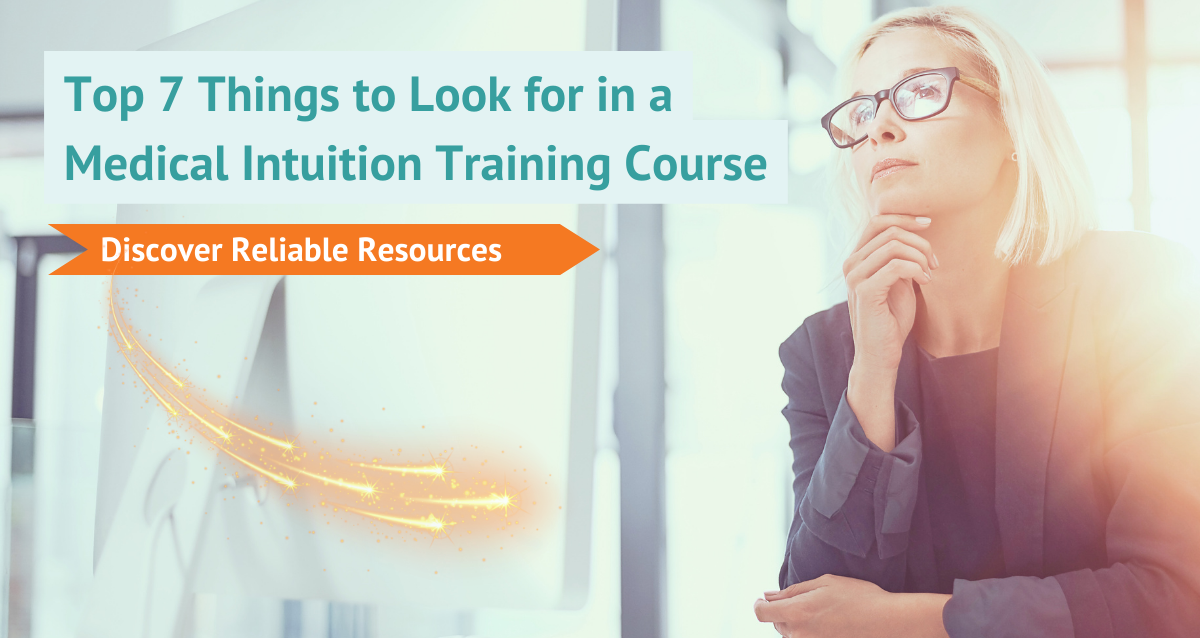
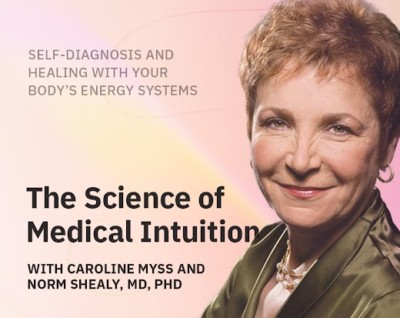
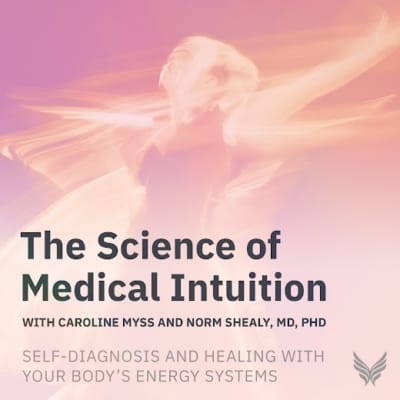
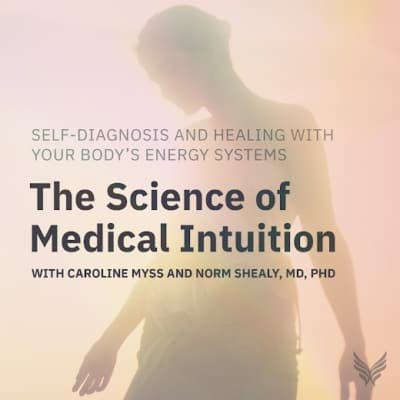
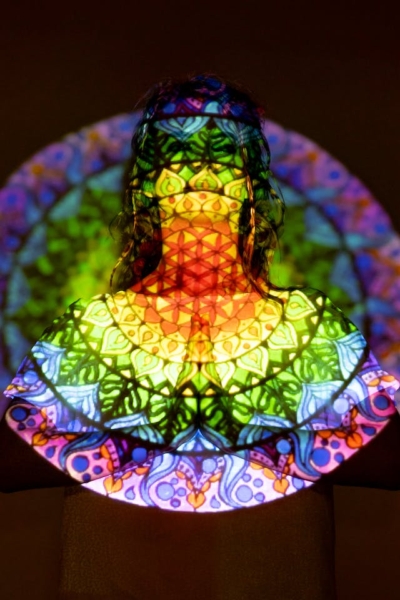
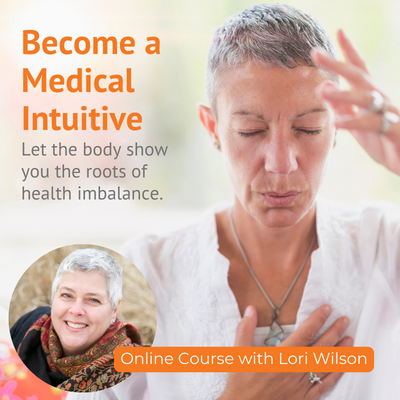
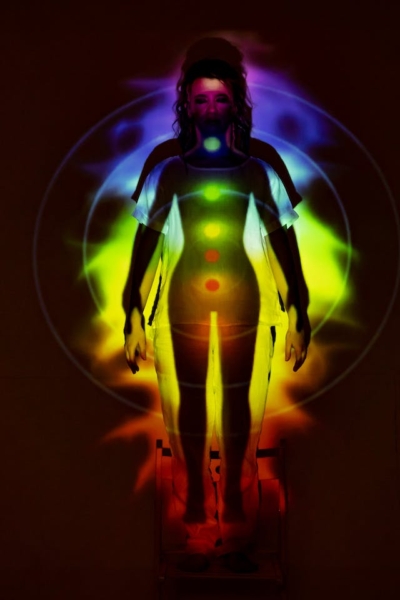
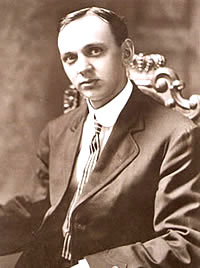
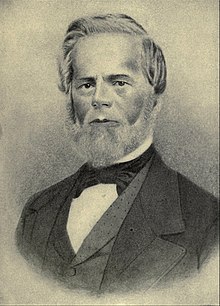



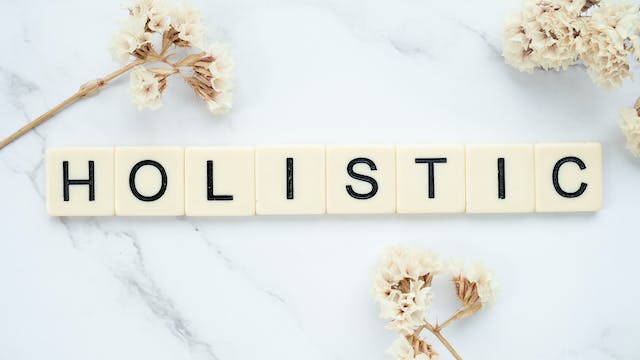
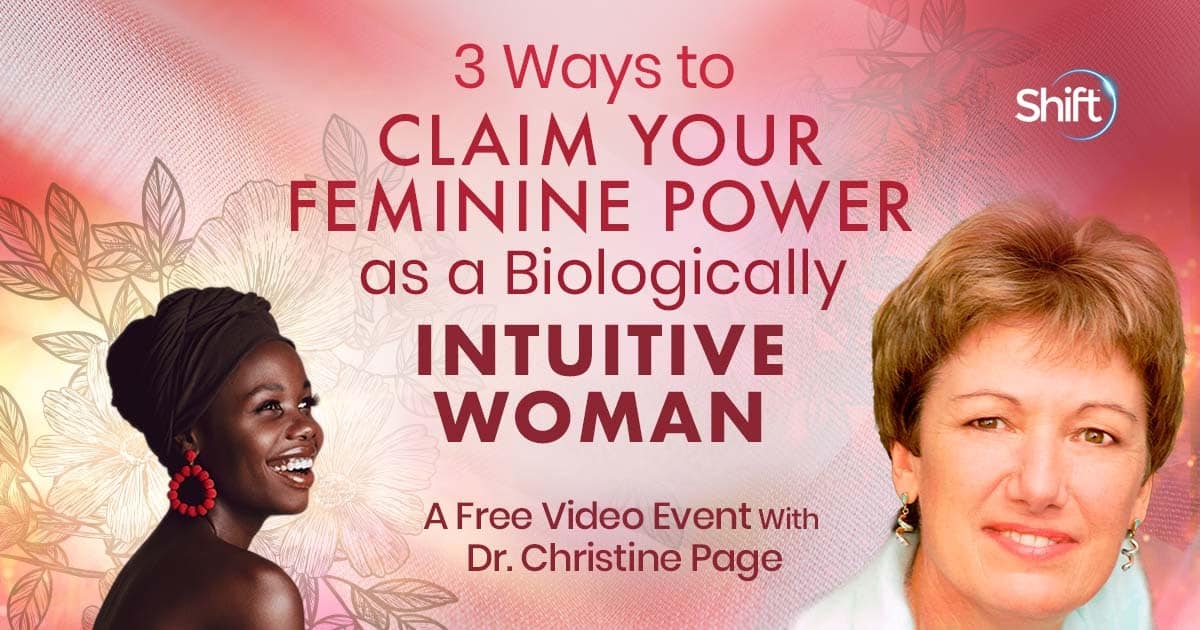
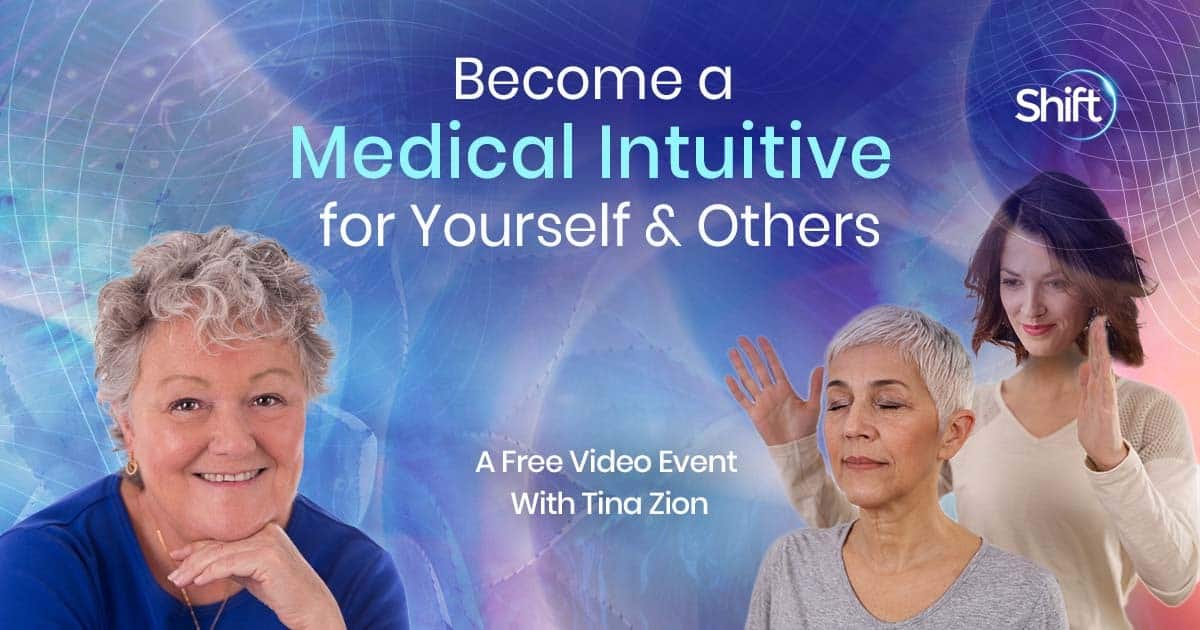
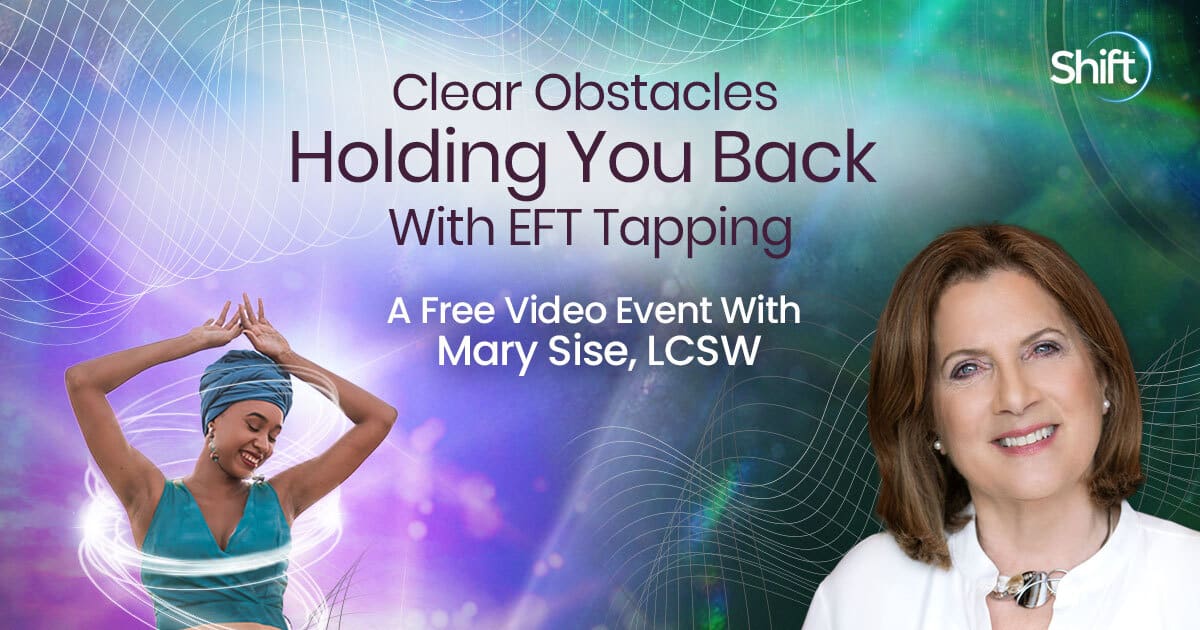
Leave a Reply